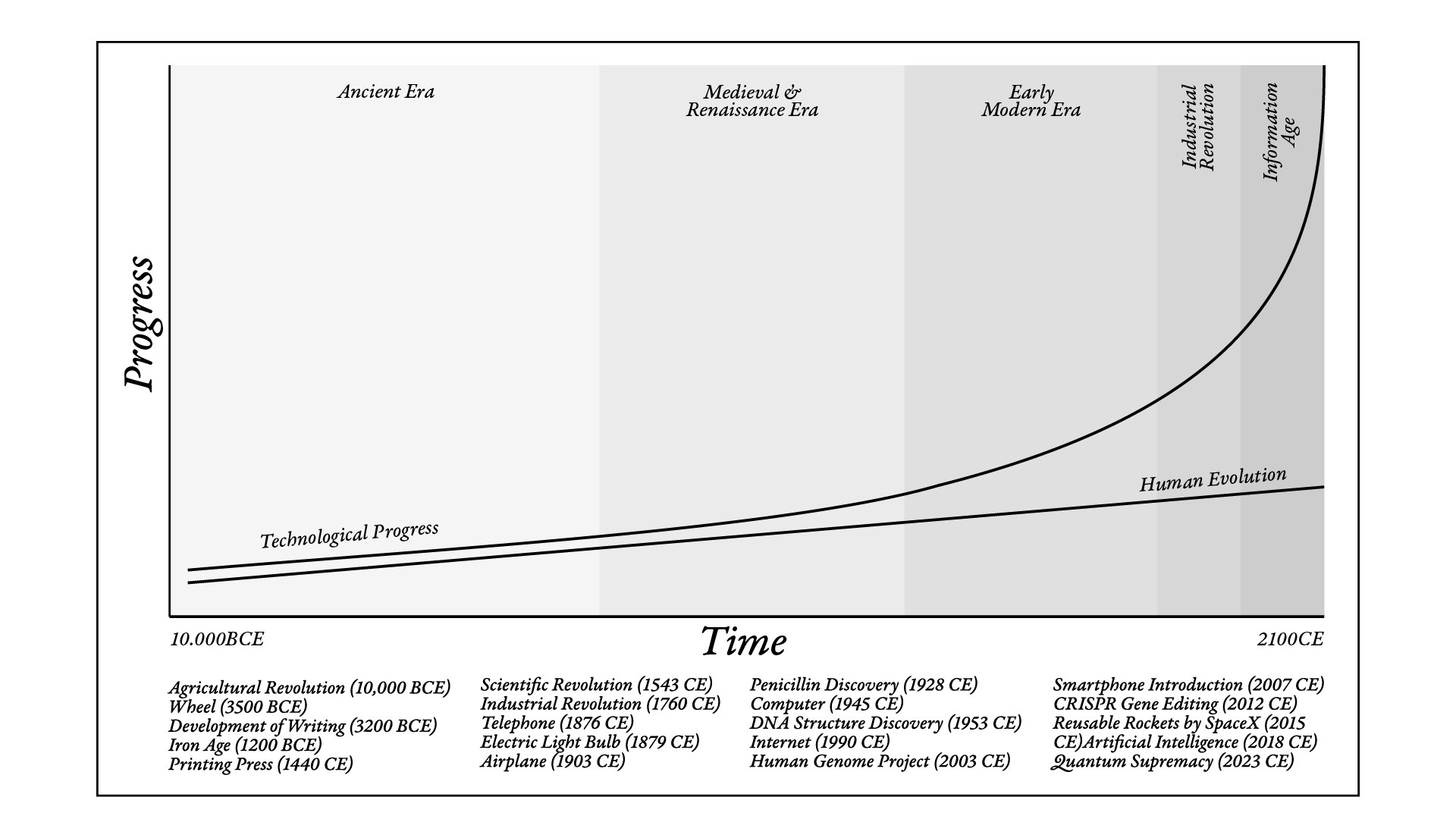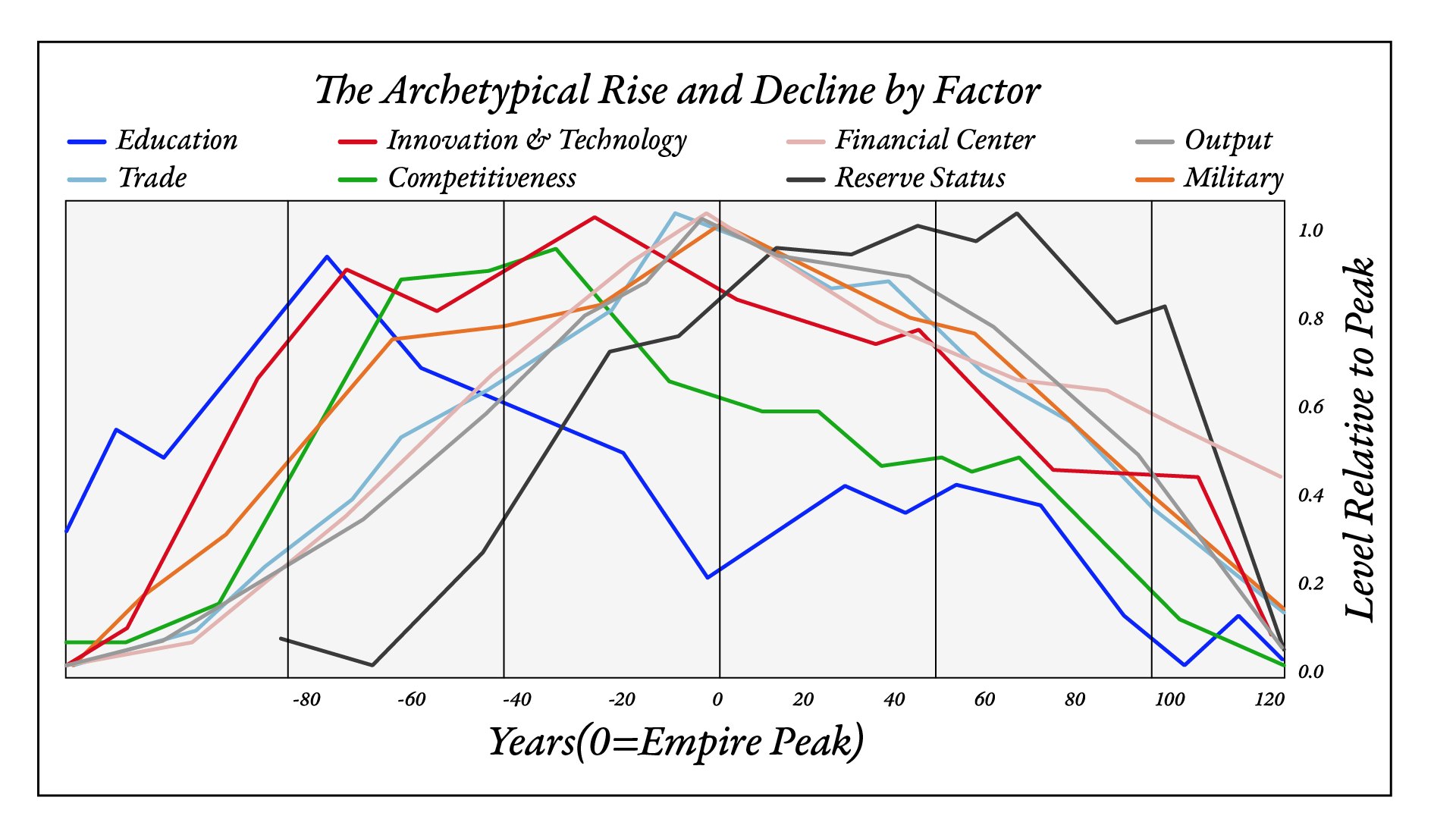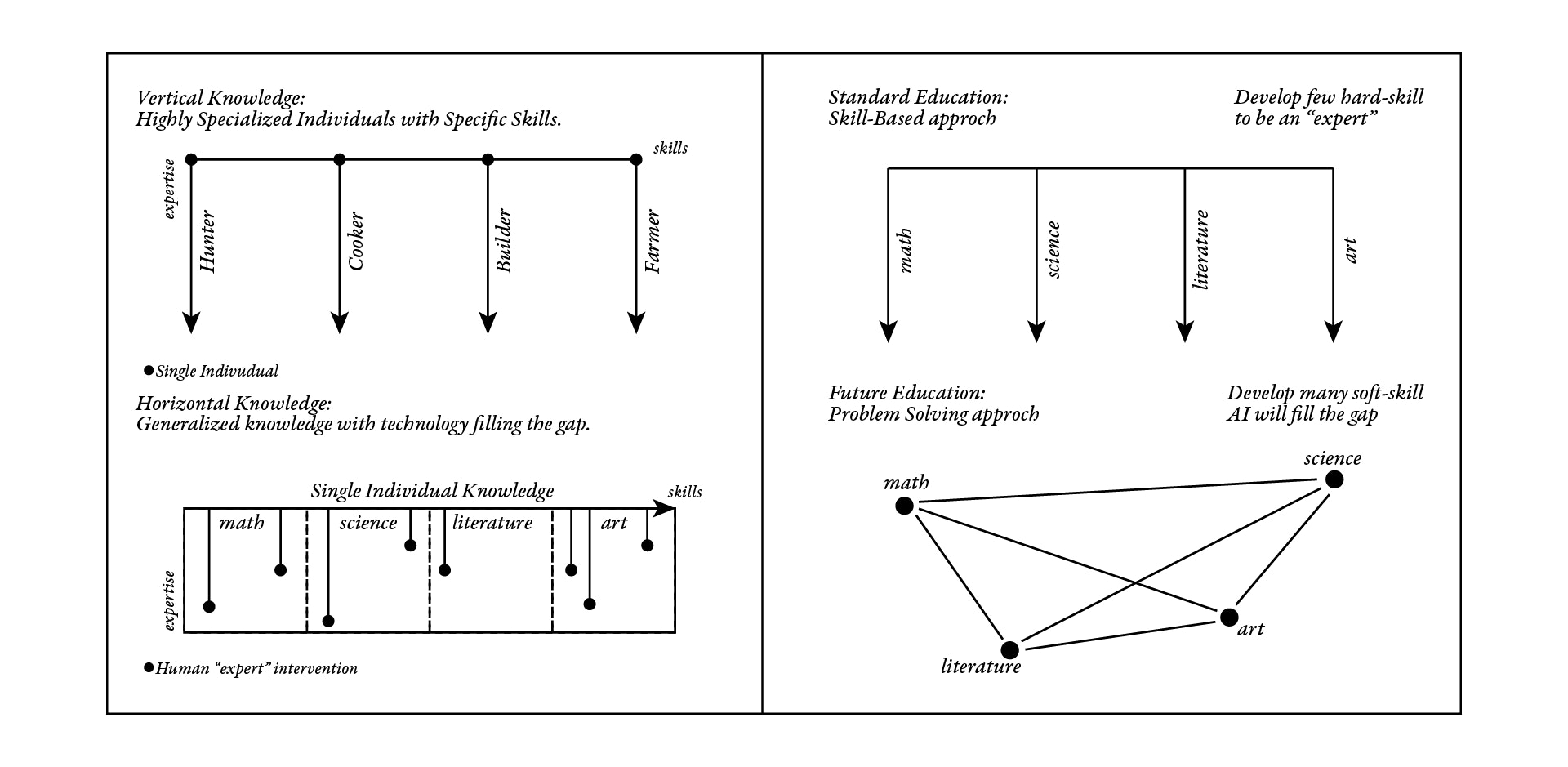The Long run
Cheating Evolution
Throughout history, humans have always been the species that cheats at evolution. While nature takes its time often hundreds of thousands of years for a useful trait to stick, we decided we didn’t have that kind of patience. Why grow claws when you can craft a spear? Why wait for your body to evolve fur when you can skin an animal and make your own coat?
From the very start, we’ve been hacking biology’s slow processes, accelerating our evolution with technology and ideas. The result? Progress that snowballs. We started as participants in the grand ecosystem, but with every innovation, we tilted the scales. Now, instead of adapting to nature, we’re adapting nature to us. And, for the most part, it’s worked out great—until recently.

Let’s rewind to where it started to get weird: the Industrial Revolution. This wasn’t just another leap forward; it was more like strapping a rocket to a bicycle. Machines didn’t just make life easier they rewrote the rules of existence. What began with steam engines and mechanized looms evolved into an insatiable hunger for speed, efficiency, and productivity.
Then came the internet. Suddenly, we weren’t just reshaping the physical world but creating entirely new digital dimensions: realities within realities. In her book Dopamine Nation, Anna Lembke describes how our constant pursuit of dopamine:“the brain’s feel-good chemical” has gone haywire in this new digital playground. Social media isn’t just a tool; it’s become a synthetic dopamine factory. Every notification, every like, every ping is a little hit, and just like any addiction, the more we get, the more we need. What started as a means to connect us has rewired our brains, leaving us more anxious, less focused, and, ironically, lonelier than ever. It’s a self-perpetuating loop that keeps us hooked while quietly reshaping our social fabric.
And now, we’re stepping into even stranger territory: Artificial Intelligence. I used to be stuck in conversations with religious people, believing that modern science had rendered belief systems obsolete. But I’ve come to realize that every era needs a belief system. A thousand years ago, religion was the framework that guided humanity. Today, science and mathematics seem to fill that role. But who’s to say that a thousand years from now, a new paradigm won’t emerge that makes our current understanding seem archaic?
We need to embrace the journey that brought us here. AI, for the first time, offers a synthetic partner that can assist us in shaping a strategic vision for the future. It holds the potential to solve today’s most pressing problems—climate change, healthcare, resource management, but it also carries the risk of undermining society if left unchecked. While we believe in the elegance of Asimov’s Three Laws of Robotics, we’ve never implemented such safeguards in reality. AI represents both a promise and a peril, and its trajectory depends entirely on the frameworks we establish now.
A Simulation Thought Experiment
Imagine a perfect simulation of Earth, built with enough computational power to include weather systems, biology, and the complex web of life as we know it. Now, add NPCs (non-playable characters) and give them synthetic consciousness. Equip them with language, instincts, and even a memory of ancestral experiences embedded in their programming. Let them evolve for 10,000 simulated years, which might be just a few seconds in our time. One day, you could pick up your phone, peer into this digital world, and find them asking the same existential questions we do: Why are we here? What is the meaning of life?
This isn’t just science fiction. It’s a real philosophical conundrum called the “simulation paradox.” What if we’re already NPCs in someone else’s ultra-realistic simulation? At what point does the boundary between simulation and reality blur beyond recognition?
There is always a shadow of technological anxiety, a cyclical recurrence accompanying every great transformation. Past revolutions have all sparked a sense of panic before gradually being absorbed into normality. Perhaps, this time too, the future is not a leap into the void but merely another iteration of the same fear that inevitably resurfaces. By recognizing this pattern, we can approach new advancements with both caution and optimism, ensuring we learn from history while shaping a more secure and ethical future.
The pace of innovation is dizzying. Breakthroughs that used to take centuries now happen in decades, or even years. The problem lies in the mismatch between the linear evolution of the human brain and the exponential curve of technological progress. As these two trajectories diverge, the gap between them grows wider, creating a future where small errors or malevolent actions could compromise entire systems before the average person even understands what’s happening. Companies, in their race to release AI, new apps, and software, are focusing on progress at the expense of ethics and safety. This relentless pursuit leaves little time to ask: Should we be doing this? What are the consequences? Who benefits, and who gets left behind? By ignoring the alignment between human capabilities and technological advancements, we risk building a future where evolution itself could be derailed.
Shortcuts and Blueprints
For too long, humanity has been obsessed with solving symptoms rather than addressing root causes. Polluted air? Build a purifier. Polluted water? Design a smart pitcher. We rarely pause to ask why we let things get so bad in the first place. This tendency to favor quick fixes over sustainable solutions has pushed us into a cycle of compounding problems and dependencies. Innovation, rather than eliminating our issues, often creates new ones.
But this doesn’t mean we should halt progress. Instead, we must steer it responsibly. Progress should not be about chasing the next shiny invention but about aligning our innovations with long-term ethical principles. This requires a fundamental shift in how we approach problem-solving. Instead of patching cracks, we must rebuild foundations.
The path forward begins with asking better questions:
What kind of future do we want?
How can our technology uplift rather than exploit?
How do we ensure that innovation serves humanity as a whole rather than a select few?
Of course, no single solution will address the enormity of these challenges. But by breaking the problem into smaller, manageable pieces, we can make steady progress. Each thoughtful step, no matter how small, moves us closer to a future where technology doesn’t just advance—it empowers and uplifts us all.
The Democracy Dilemma
Zooming out to the macro level, we face intertwined challenges in geopolitics and democracy. We live in a fragmented world where competing powers vie for economic and cultural dominance. On paper, it seems like everyone is aiming for the same thing—the progress of humanity—but the methods to get there couldn’t be more different. These divergences generate conflicts and obstacles that hinder collective progress.
This lack of cooperation and unified vision often traps us in problems that would be far easier to solve collectively. As Jared Diamond observes in Collapse: How Societies Choose to Fail or Succeed,
“one of the primary causes of societal collapse is the lack of cooperation between different social groups.”
Fragmentation, however, is only part of the story. Within democracies themselves lies a paradoxical tension.
The Paradox of Democracy
At its core, democracy promises rule by the people, where everyone gets a say, directly or through representatives. That sounds great, right? Power to the people! But here’s where it gets messy. Democracy isn’t just a system; it’s also an idea that clashes with its own reality.
The paradox? Democracy depends on collective decision-making by individuals who often:
Don’t have perfect information (most of us don’t read legislative proposals for fun).
Don’t always agree on what’s best (ask 10 people about healthcare; get 11 opinions).
Sometimes vote against their own interests because humans are emotional, tribal, and full of biases.
Yet, despite all this, democracy is hailed as one of the most effective ways to govern. Why? Because its flaws—deliberation, compromise, and even inefficiency—can paradoxically lead to better outcomes over time.
In a world facing monumental challenges like climate change, pandemics, and growing inequality, the fragmentation between nations and the inefficiencies within democracies form a double bind. Fragmentation makes it hard to coordinate on global solutions, while the slow, messy process of democratic governance often delays necessary actions.
To move forward, we need to champion greater international cooperation and a shared vision for the future, built on the principles of solidarity, sustainability, and social justice. At the same time, democracies need to evolve: embracing reforms that streamline decision-making without sacrificing foundational principles of fairness and representation.
Democracy is like trying to build IKEA furniture with a room full of people shouting different instructions. Frustrating? Yes. But eventually, you get a wonky table that everyone feels they contributed to. And weirdly, that’s kind of the point: the process itself brings legitimacy.
For both geopolitics and democracy, the solution lies in learning to trust the process while striving to make it better.
Education: The Catalyst of Progress
Education and knowledge are the bedrock of everything. As Ray Dalio explains in Principles for Dealing with the Changing World Order, the rise of great nations begins with strong education systems. Dalio identifies three key phases in the lifecycle of empires—Rise, Top, and Decline—and emphasizes that the rise is fundamentally fueled by education. This includes not just teaching knowledge and skills but instilling values like character, civility, and work ethic.

A well-educated society is more likely to understand problems, innovate solutions, and think long-term. By contrast, during the “Top” phase, complacency sets in. Education quality declines, wealth gaps widen, and political divisions deepen, setting the stage for the “Decline.” The virtuous cycle of progress breaks, and nations lose their competitive edge.
This ties directly to the challenges outlined in the previous sections. Education is expensive, both financially and in terms of time. And in a world increasingly divided internally as well as externally governments find it harder to prioritize education policies that require generational effort to bear fruit. Instead, they focus on short-term issues to maintain power.
This highlights one of democracy’s weaknesses compared to autocracies. Take China: its leviathan-like government, unbound by election cycles, can implement reforms with long-term foresight. In democratic systems, however, leaders must show results every four years to remain at the helm. This pressure often leads to a neglect of foundational policies like education, which yield no immediate political rewards but are essential for sustained progress.
If we want to sustain progress and avoid the pitfalls of decline, investing in education must be a global priority. It is not just a tool for personal growth but the cornerstone of societal resilience and innovation.
Rethinking How We Learn

Another crucial aspect of education lies in reimagining how we teach. The current system isn’t wrong, but it’s outdated. Today’s education is built on vertical silos, with subjects taught in isolation. History is history. Physics is physics. Rarely are connections between them explored, leaving students with a fragmented understanding of the world.
Take math as an example. How often have students said, “Why do I need to learn this? When will I ever use equations in real life?” And they’re right in its current form, the system makes these skills feel irrelevant. But what if we taught that learning equations builds analytical thinking, a skill crucial in today’s problem-solving world?
We need to shift the paradigm. Instead of focusing on compartmentalized knowledge, schools should emphasize skills like creative and analytical thinking, problem-solving, adaptability, and logic. Imagine a curriculum where students don’t just memorize facts but learn how to:
Navigate from point A to point B
Overcome obstacles
Approach challenges with critical thinking
In Range: Why Generalists Triumph in a Specialized World, David Epstein highlights the value of this interdisciplinary approach. Generalists:those who explore diverse fields before focusing often outperform specialists in solving complex problems. For instance, scientists who pivot between disciplines frequently produce groundbreaking work because they connect ideas others overlook. This insight reinforces the idea that education should nurture broad thinking before specialization.
Such a system wouldn’t just produce smarter students; it would create individuals equipped to adapt and thrive in an ever-changing world. It’s not about abandoning traditional subjects but teaching them in a way that connects to the bigger picture. Elasticity of mind, cultivated early, could empower students to engage meaningfully with both classical education and contemporary challenges.
Adaptation: Becoming Antifragile
The third and perhaps most comprehensive aspect is adaptation. It is the most critical because it is intrinsic to our nature. We discussed it at the beginning of this essay—adaptation and evolution go hand in hand.We must adapt as a society.
Reality is changing, and it’s changing faster than ever. While our brains might not evolve as rapidly as the LLM's we use, we can still exercise our minds to stay sharp. Think about it: we hit the gym five times a week to sculpt our bodies, yet balk at reading a book for 30 minutes a day to train our minds.
We’ve become lazy, and it’s only getting worse.We’ve also started seeing boredom as the enemy, when in fact, it’s the cooling-off period our brains need to remain active. Let’s relearn how to be bored and train ourselves to tackle hard things: you don’t get smarter by doing dumb activities.
Reading is hard and stressful, especially with your phone nearby. But we must learn to do it. We must learn to strengthen our willpower. As Nassim Nicholas Taleb argues in Antifragile, we need to become antifragile. We thrive not by avoiding challenges but by embracing them.
Taleb’s concept of antifragility is fascinating. Unlike resilience, which merely resists shocks and stays the same, the antifragile thrives and grows stronger from them. One example Taleb gives is the Hydra from Greek mythology: cut off one head, and two grow back in its place. This isn’t just a metaphor; it’s a call to rethink how we face stress and adversity.
Take small, calculated risks. Expose yourself to manageable stressors. For instance, fasting intermittently teaches your body to adapt to the absence of food, making it stronger in the process. Similarly, intellectual challenges like reading complex material or solving puzzles build cognitive flexibility and mental endurance.
If we embrace the discomfort of learning, failing, and trying again, we not only safeguard ourselves against life’s unpredictability but position ourselves to excel in it. Adaptation isn’t just survival, it’s thriving in the face of uncertainty.
The Power of Habit
Mastery takes time, but more importantly, it takes consistency. The 10,000-Hour Rule, popularized by Malcolm Gladwell in Outliers, suggests that achieving world-class expertise requires consistent and deliberate practice over time. However, it’s not just about hitting a specific number of hours: it’s about developing habits that integrate improvement into daily life. Small, consistent efforts like spending 30 minutes each day on a skill create a compounding effect that builds momentum and mastery over time.
The key is to focus on deliberate practice: challenging, purposeful, and goal-oriented repetition that pushes your boundaries. Whether you’re learning a skill, improving physical fitness, or cultivating emotional resilience, these small, intentional efforts ensure consistent growth. Habits, once ingrained, remove decision-making friction, ensuring progress even when motivation wanes.
The 10,000-Hour Rule is a reminder that greatness comes not from a single leap but from steady, deliberate effort. Habits become the scaffolding for long-term success, helping you thrive even amidst life’s unpredictability.
The Bottom Line
So, what’s the ultimate takeaway? It’s not about singular ideas like AI or antifragility. It’s about the systems and frameworks we build around them. Progress isn’t a straight path, and it’s rarely smooth. It’s a collective effort to navigate uncertainty, adapt to change, and ensure that we’re not just advancing for the sake of it, but creating a future that works for everyone.
Now, as you set this essay aside, think about the systems you rely on and the habits you cultivate. Each small step you take today is a brick in the foundation of tomorrow. Let’s not just thrive in the chaos—let’s learn to shape it.